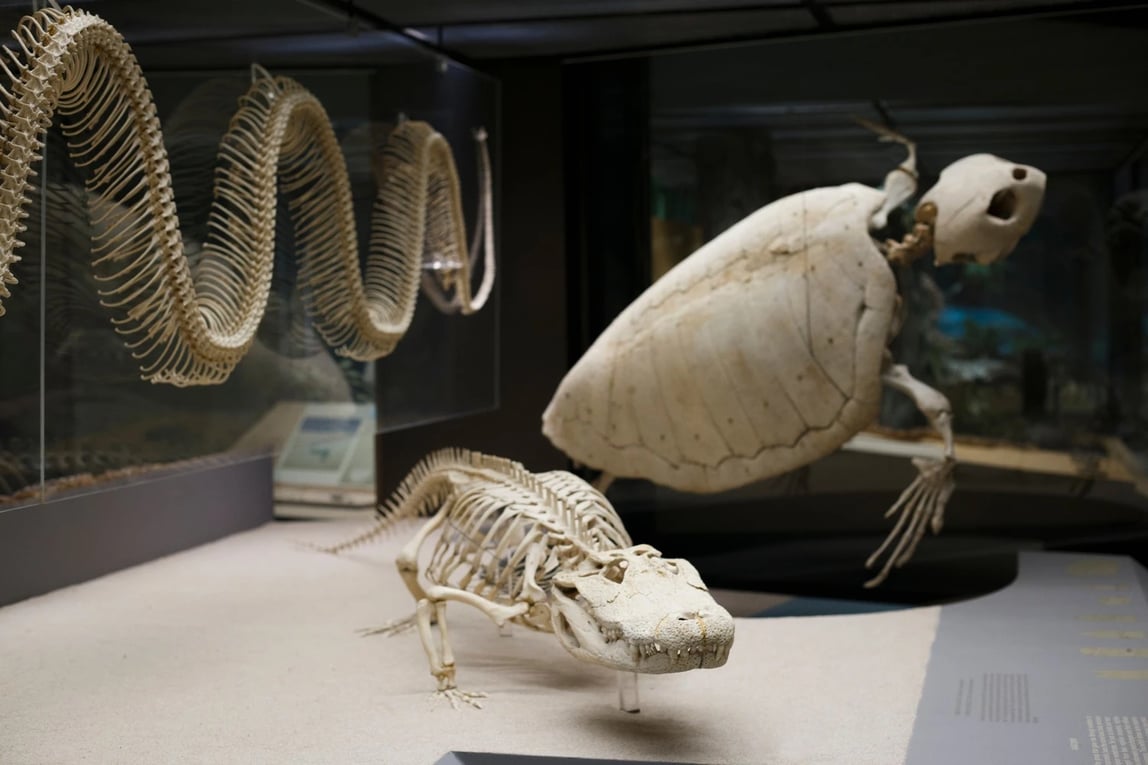5 Must-See Things at the American Museum of Natural History

The American Museum of Natural History, founded in 1869, has been the scientific and historical heart of Manhattan for decades.
It hosts exhibitions and collections from all over the world and lights the way through the history of our planet and the multifold cultures of societies.
Must-see things at the American Museum of Natural History are countless. However, here are our five suggestions to see at the Museum.
Blue Whale Model
Meet face-to-face with the largest animal on the Earth, the blue whale!
This model had constructed firstly in the 1960s, but due to limited observations of the species, it had to be regenerated after years. In 2001, the 94-foot-long model was restored and made more realistic and compatible with a real blue whale. This model is a part of the Hall of Ocean Life in the Museum.
You will feel the common ground of the mammals and the similarities between the human and the blue whale when you explore the realistic and vivid details of this species.
The Willamette Meteorite
It is breathtaking to imagine the deep of the space. The Willamette Meteorite has come from that fascinating world to Earth!
It is an iron meteorite and the largest one found in the USA. The weight is shocking, and it is 15.5 tons. Just to keep in mind, iron meteorites are rarely found on Earth.
The Willamette Meteorite, this unique and majestic sample in the Museum, will encourage you to think and search about our origins and how life has come into existence in both conceptional and chemical senses.
Mammoth
Mammoths are breathtaking mammals but extinct so many years ago.
Yet, you have the chance to see how fascinating they are. The skeleton of the mammoth, which is displayed in the Museum, was found in Indiana, and thought that it was alive 11,000 years ago.
Also, there is a mummified baby woolly mammoth that has been preserved and found in the frozen ground. The studies show that this mammoth is 21,000 years old.
Northwest Coast Hall
In Northwest Coast Hall, you can see various exhibitions revealing the culture of Indigenous communities of the Pacific Northwest. Here you can feel the ongoing historical and cultural bonds with these societies.
There are restored artifacts that represent their material culture. They expose the ancient and impressive cultural items of these communities. In this hall, there are also interactive activities that you can get more familiar with these cultures through storytelling and multimedia displays.
Tyrannosaurus Rex
With tiny little arms and a giant and strong jaw with the sharpest teeth, Tyrannosaurus rex, as we all know as T-rex, is familiar to us. We have watched this dinosaur in the movies and documentaries and heard about what it looks like and how predatory it is.
In the Museum, you have the chance to see what kind of a predator it actually is.
Fossil hunter Barnum Brown found this skeleton of the T-rex exhibited in the Museum in Montana. The fossils of this dinosaur united in a shape that the dinosaur just stands in front of you on its two legs.
You will be astonished and charmed by this giant T-rex when you meet it.
A unique experience in The Wallace
The Wallace is located at the center of powerful cultural and historical places in Manhattan.
It provides all you need during your visit. In the heart of Manhattan, with luxurious accommodation facilities, you can let yourself unwind in our hotel.
Explore the spirit of NYC with The Wallace. Book at once!
